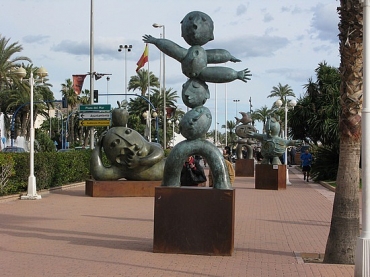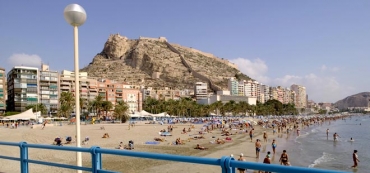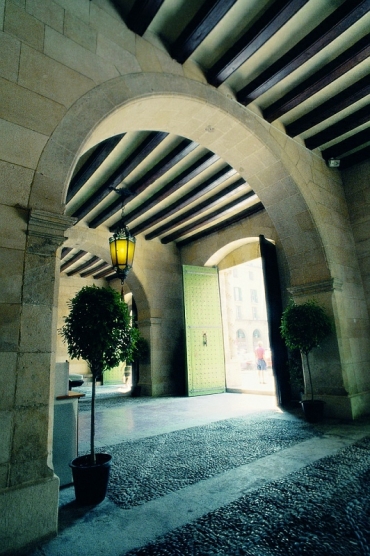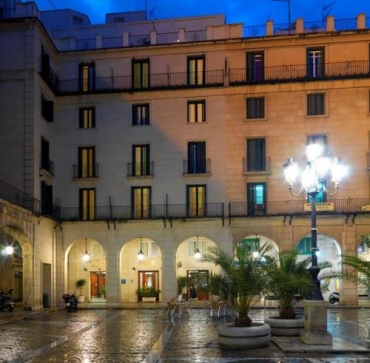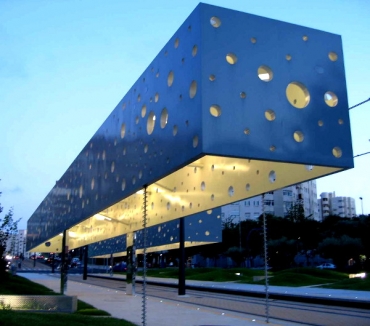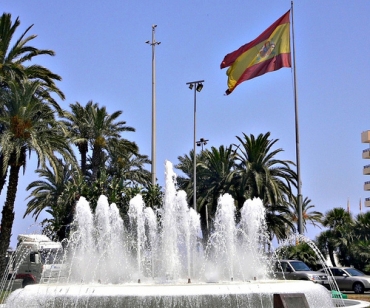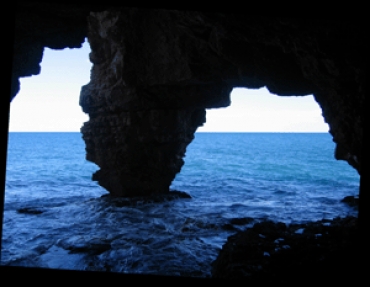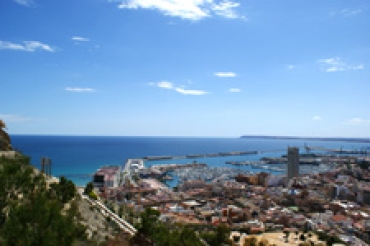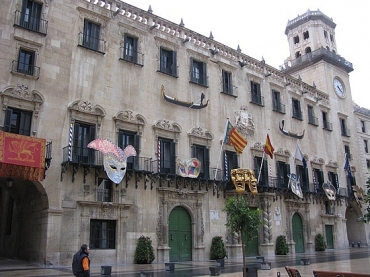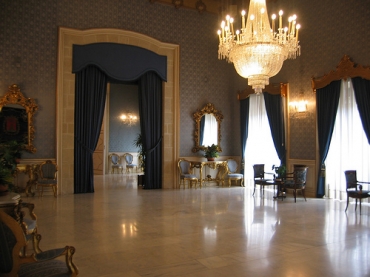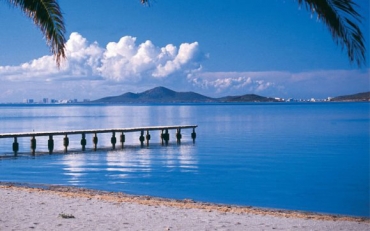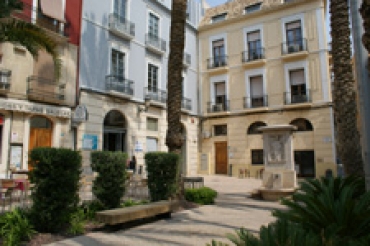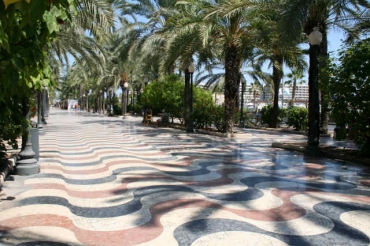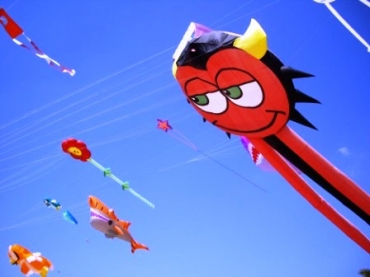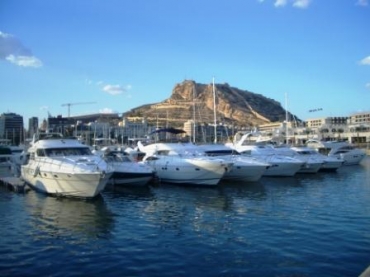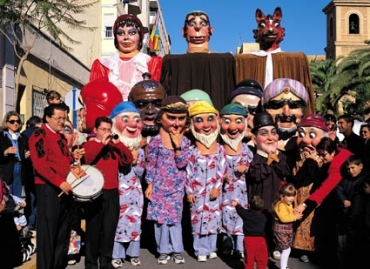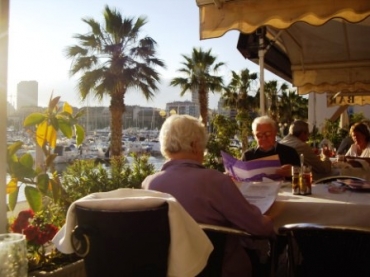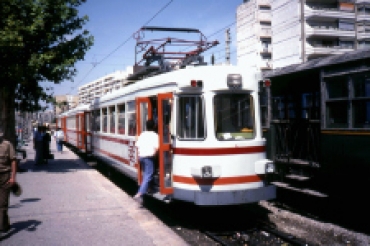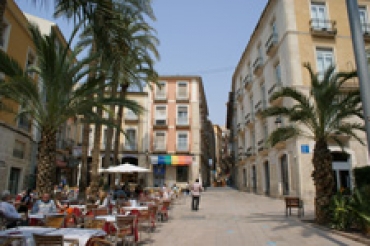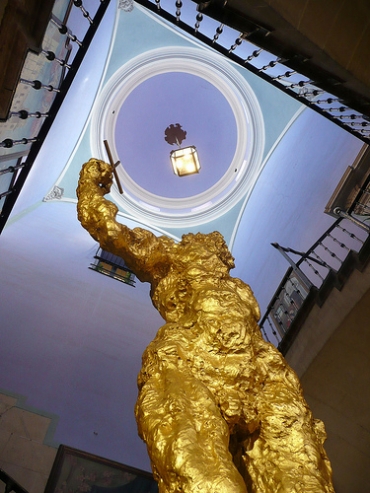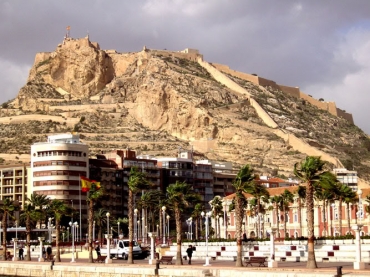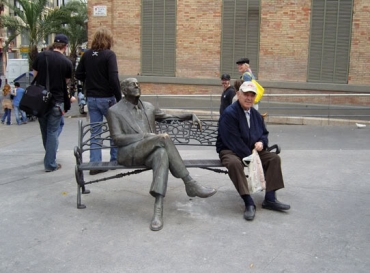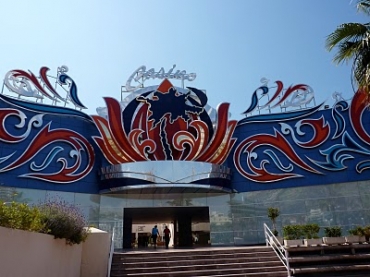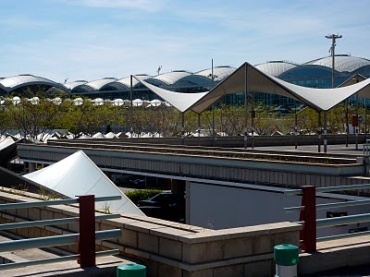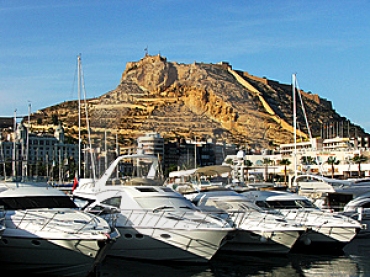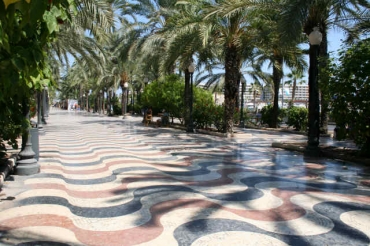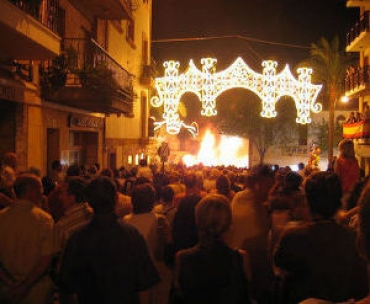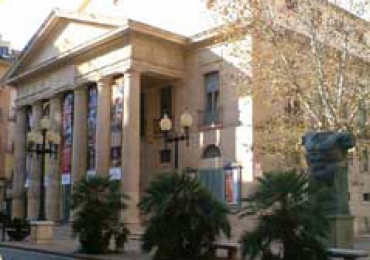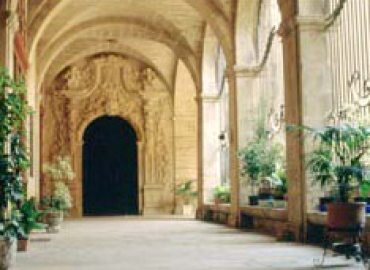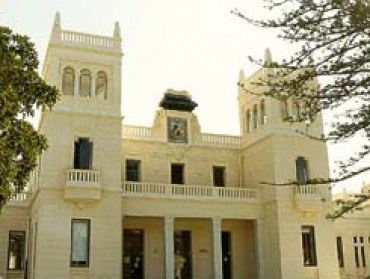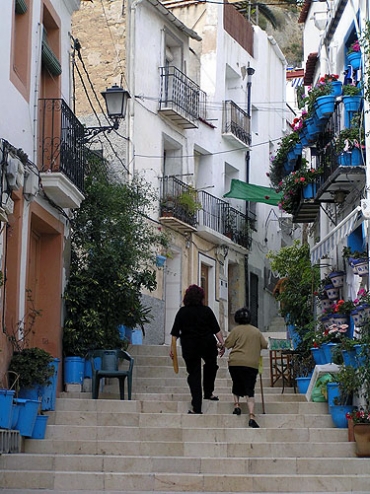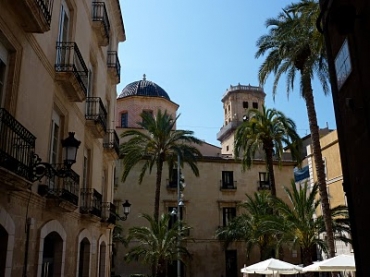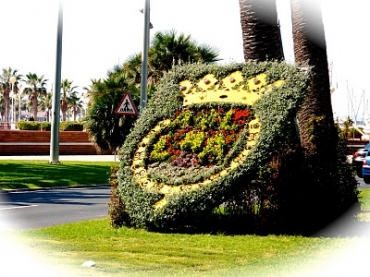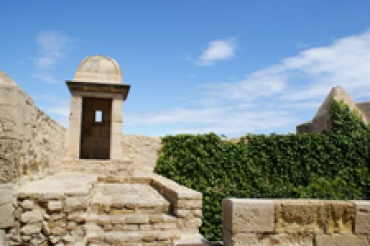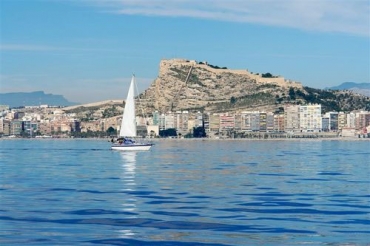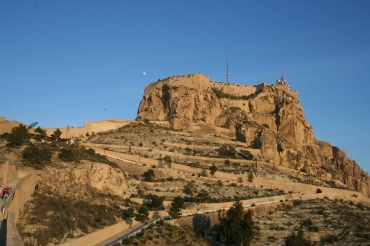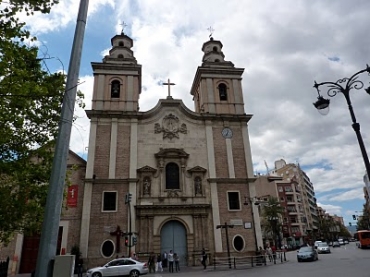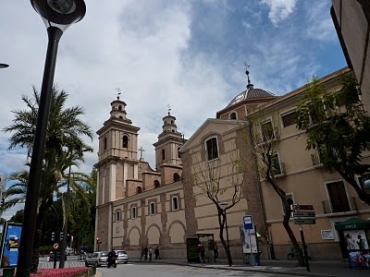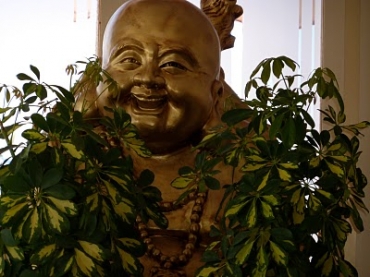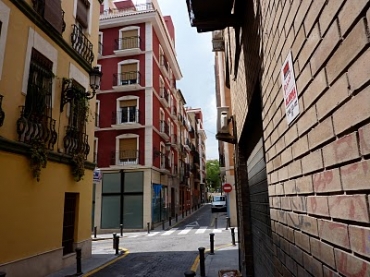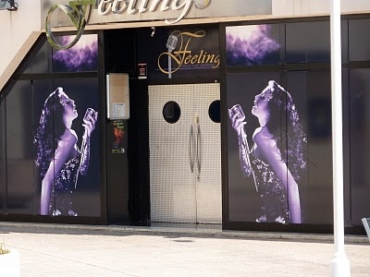Alicante
With its many green areas, Alicante is famous for its promenades and the beautiful marina where you have a spectacular view of the Santa Barbara Castle, the city has so much to see and enjoy.
Why not try the tourist bus? Known as the Turibus, this specially equipped bus tours the city from 10am until 2pm and then from 5pm until 7pm and can carry up to 80 passengers. A ticket costs only €8 (€5 for kids and pensioners) and is valid all day so you can hop on and off as many times as you like.
There are stops at all the popular tourist sites; Plaza del Mar, Archaeological Museum, Sta Barbabra Castle, Central Market, Luceros, Renfe Station, Maisonnave (the shopping area), the Theatre and the Rambla. Carrying maps and pamphlets about Alicante's history and sites, the bus also has a recorded guided tour in 3 languages, so we all know just where we are!
Alicante - a tour of the more beautiful Buildings and Monuments
Iglesia de Santa Maria (St Mary's Church) was built in a gothic style between the 14th and 16th centuries and stands on the foundations of a Moorish mosque. There is a wide range of art kept in the church with two of the most valuable dating from the 15th century. Of particular interest is the 16th century white marble font that is attributed to the school of Michelangelo.
Walk a little further along the street toward La Ramblas and you will find the Ayuntamiento (Town Hall) which, with its twin towers, strikes an impressive pose over a square lined by arcaded walkways. Step inside to see the dramatic statue of Dali, and below it, on the lowest step of the staircase, you can see the 'cota zero' a brass stud used to measure the height of the sea level of all Spanish Towns. But don't stop there - go up the stairs to see the striking 'blue' room and the small chapel.
Still moving towards La Ramblas, two streets back you can find the imposing Cathedral de San Nicolás de Bari (Cathedral of Saint Nicholas of Bari). Completed in 1662, it dominates the warren of streets that have wrapped themselves around it. Once again this was built on the remains of a mosque (a common practice in those days, to eradicate any trace of the Moors) and has a wonderful blue dome that rises to over 45m. Do visit inside the Cathedral and have a glance at the communion chapel; it's considered one of the most beautiful in Spain.
Walking a little way along past the Cathedral you start to climb uphill in to the area known as Santa Cruz. Here amongst narrow streets more reminiscent of Seville you will find the Chapel of Santa Cruz (Holy Cross). Constructed at the end of the 18th century it once formed part of the old town walls and now plays a large part in the Easter celebrations when one of the large heavy floats containing a religious icon is expertly manoeuvred around the tight bends and carried into the church.
Now head back to La Ramblas and about half way up turn left onto Teatro Street and you will see the Teatro Principal (Main Theatre). This is a fine example of neo-classical construction and when it was completed in 1847 the interior was designed to be as grand as the exterior: in its day it was considered quite audacious! This is the centre of culture for the city where performances of ballet, opera and theatre can be enjoyed - so do check out the programme of events.
Carrying on to the top end of La Rambla and across the road is the Mercado Central (Central Market). The art deco building has two floors; meat is sold on one and fish on another. This impressive building is usually a hive of activity most mornings and gives you an opportunity to experience a slice of Spanish life! At the back of the mercado is the daily flower market: full of colour and perfume - don't miss it!
Finally carry on along the street called Calderon de la Barca (running from the back of the market) and at the top you will come across the fabulous Plaza de Toros (Bullring). Built in 1849 it is one of the oldest in Spain and is still in use today. Here you will find a museum dedicated to bullfighting where artefacts such as capes and costumes are on show along with the occasional stuffed bulls' head. If you visit on Saturday morning there is usually a busy market being held. Outside the bullring is a marvellous bronze statue of racing bulls, whilst the square that the bullring is on is filled with jets of water that bubble up from the pavements - great for the kids to jump over on a hot summers day!
If you've reached this far then you may want to walk a few hundred meters to the right where you will be able to view what was once the poorhouse of Alicante. Formally a Bishop's palace, the building that dates from 1752 became a tobacco factory in 1801 and until recently was still functioning as one.
Museums and Art Galleries...
Alicante City is full of all kinds of museums and art galleries, from the drier subjects of archaeology to the more fun ones like bullfighting and from classical paintings through to Contemporary. We would certainly advise you to visit the Tourist Information Office to get a complete list of all there is to see as new ones are always opening up - so, with something for everyone let us give you a taster!
Museo Taurino (Bullfighting Museum)...
Swirling capes, pin sharp swords and elaborate costumes - they're all here, and for the less squeamish, there are also a few stuffed bulls heads around the place! Its an interesting Museum that brings together the artefacts associated with bull fighting which, whether you love or hate it, has been a part of Spanish culture for centuries.
MARQ (Museum of Archaeology)...
This museum is history brought bang up to date, no dry dusty exhibits here; what you have is the archaeological finds from the Alicante region displayed in a very modern way. Wonderfully lit and intermingled with audio-visuals, the collections come alive giving you a flavour of the various civilisations that have made Alicante their home. No wonder that it was adjudged to be Europe's best museum in 2004!
Artefacts range from 100,000 years ago when the first human occupation occurred, through to the Roman era and right up to the mid 19th century. Alicante is very proud of this museum, and justifiably so. The underwater Exhibition is a definite must see. Taking you on a journey through the ages and showing you the part the sea has played, it ends with a dramatic reconstruction of a boat believed to have sunk in the 5th century AC.
Mubag Gravina Fine Arts Museum...
Step inside the door of this building and you can't fail to be impressed by the grandeur of the stone arches that stretch around the ground floor. Once a palace owned by the Earl of Limiares, this elegant building now holds a collection of art ranging mainly from the 16th to the 20th century. Opened in 2001 the 2000 works owned by the Provincial Council are housed here and 500 of them have been selected for exhibition. Unusually these works are put into context by the use of audio-visual equipment, period furniture and textiles. The curators hope that rather than being mere spectators, visitors to the gallery will be encouraged to play a more active part in understanding the artwork.
Santa Barbara Castle, Alicante City...
You can't fail to notice this impressive castle situated on an outcrop over looking Alicante City. It's one of the largest medieval fortresses in Europe and covers the complete summit of the Benacantil Mountain. Originally built by the Moors in the 10th century, the castle received its name from the conquest of King Alfonse the Wise that took place on 4th December 1248: Saint Barbara's day. Over the following centuries it was developed and extended leaving it with three main areas all dating from different eras.
Santa Barbara Castle has everything you would expect, cannons, a palace, dungeons, a moat, the ruins of a small church and of course that famous lookout tower. From all around the walls you get the most fantastic views: a definite photo opportunity. And when you're tired of walking up and down steep paths, peering over cliff edges and pondering the places from where boiling oil was thrown, there are two café areas where you can take a break in the shade of pine trees.
The castle is free to visit and there are two entrance points. If you're feeling energetic you can walk along the road that winds around the back of the mountain, or if you're short of time you can drive. The easier way, incurring a small charge (but free if you are disabled or an EU senior citizen) is via an elevator going up through a tunnel carved out of the rock. You find the entrance opposite the Postiguet beach area.
Santa BarbaraCastleis an excellent place to visit at anytime of the year. In the height of summer it’s a perfect place to catch the sea breeze, whilst in the cooler months the walk up to the castle through the parks and pine wood allows you time to reflect on the difficulties of capturing it.
Take a look at the rocky outcrop just below the lookout point: depending on the angle that you view it, you will be able to see the outline of a Moor's face!?
In the summer months of July and August the Town Hall hosts a programme of special 'castle evenings'. These usually consist of concerts held on Friday and Saturday nights in the courtyard of Santa Barbara Castle. They're free (limited only by the maximum capacity of the venue) and start at 22.00hrs. Being out under the stars on a balmy evening, listening to music with the backdrop of a medieval castle is a truly enchanting experience.
As if one castle wasn't enough, Alicante goes one better and has two!The Castillo de San Fernando was built at the beginning of the 19th century on Tossal Hill as part of Alicante's defence against Napoleon's advance. Sadly it proved useless and was abandoned shortly after. It still has an ornate doorway that helps give a sense of the design, and part of its walls are well preserved should you want to take a look.
For more tourist information about Alicante.
